Junya Shiraishi
Time-constrained Federated Learning (FL) in Push-Pull IoT Wireless Access
Nov 13, 2024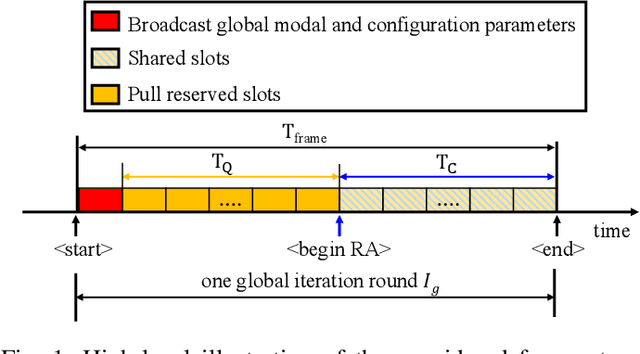
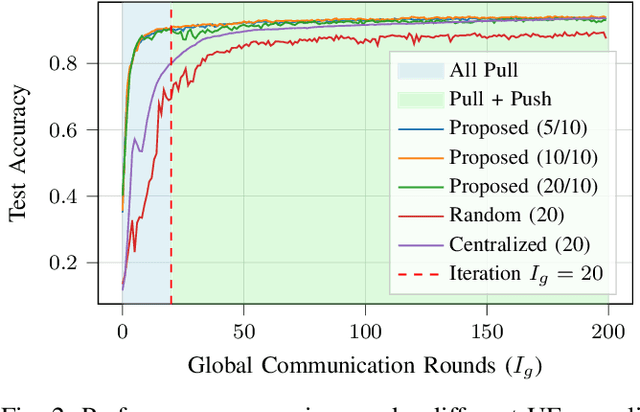
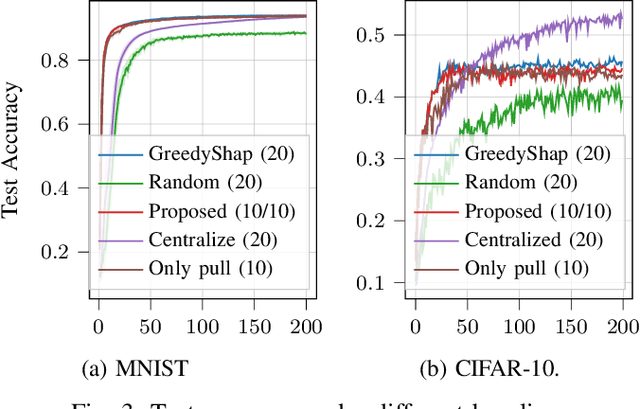
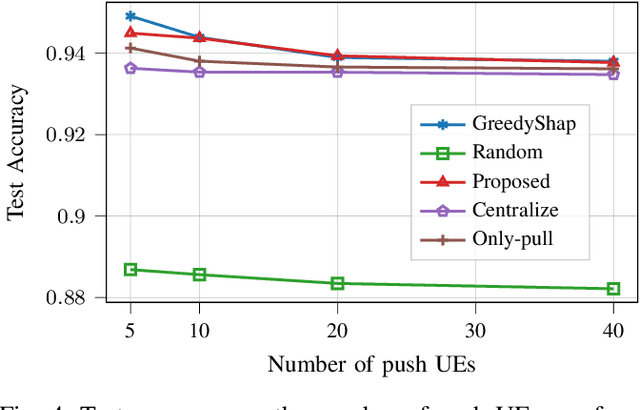
Abstract:Training a high-quality Federated Learning (FL) model at the network edge is challenged by limited transmission resources. Although various device scheduling strategies have been proposed, it remains unclear how scheduling decisions affect the FL model performance under temporal constraints. This is pronounced when the wireless medium is shared to enable the participation of heterogeneous Internet of Things (IoT) devices with distinct communication modes: (1) a scheduling (pull) scheme, that selects devices with valuable updates, and (2) random access (push), in which interested devices transmit model parameters. The motivation for pushing data is the improved representation of own data distribution within the trained FL model and thereby better generalization. The scheduling strategy affects the transmission opportunities for push-based communication during the access phase, extending the number of communication rounds required for model convergence. This work investigates the interplay of push-pull interactions in a time-constrained FL setting, where the communication opportunities are finite, with a utility-based analytical model. Using real-world datasets, we provide a performance tradeoff analysis that validates the significance of strategic device scheduling under push-pull wireless access for several practical settings. The simulation results elucidate the impact of the device sampling strategy on learning efficiency under timing constraints.
Content-based Wake-up for Energy-efficient and Timely Top-k IoT Sensing Data Retrieval
Oct 08, 2024



Abstract:Energy efficiency and information freshness are key requirements for sensor nodes serving Industrial Internet of Things (IIoT) applications, where a sink node collects informative and fresh data before a deadline, e.g., to control an external actuator. Content-based wake-up (CoWu) activates a subset of nodes that hold data relevant for the sink's goal, thereby offering an energy-efficient way to attain objectives related to information freshness. This paper focuses on a scenario where the sink collects fresh information on top-k values, defined as data from the nodes observing the k highest readings at the deadline. We introduce a new metric called top-k Query Age of Information (k-QAoI), which allows us to characterize the performance of CoWu by considering the characteristics of the physical process. Further, we show how to select the CoWu parameters, such as its timing and threshold, to attain both information freshness and energy efficiency. The numerical results reveal the effectiveness of the CoWu approach, which is able to collect top-k data with higher energy efficiency while reducing k-QAoI when compared to round-robin scheduling, especially when the number of nodes is large and the required size of k is small.
Coexistence of Pull and Push Communication in Wireless Access for IoT Devices
Apr 11, 2024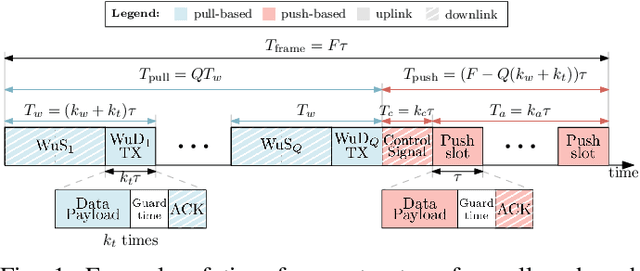
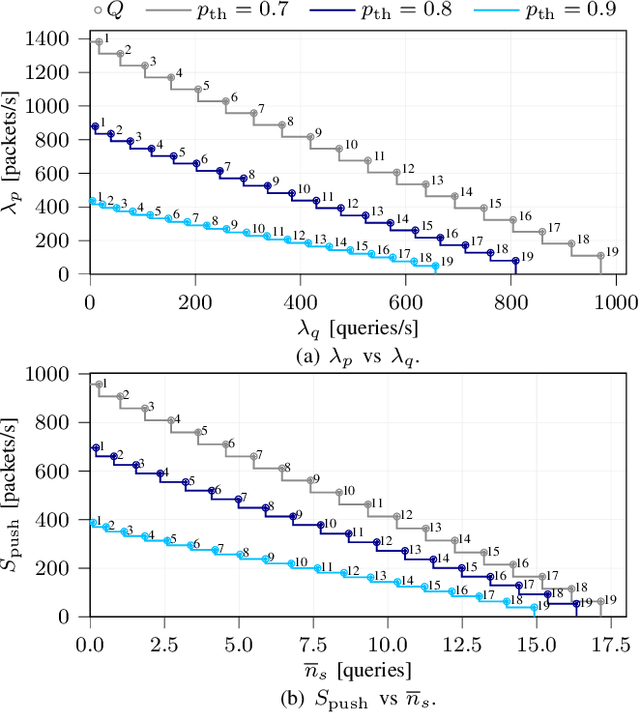
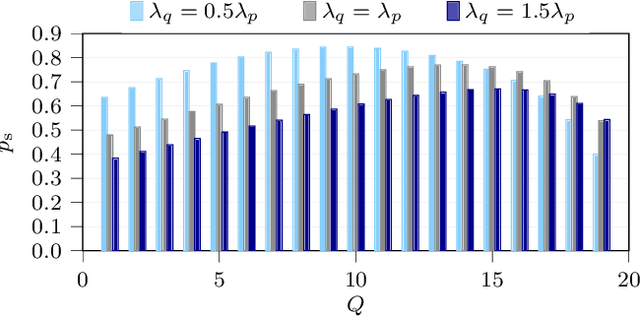
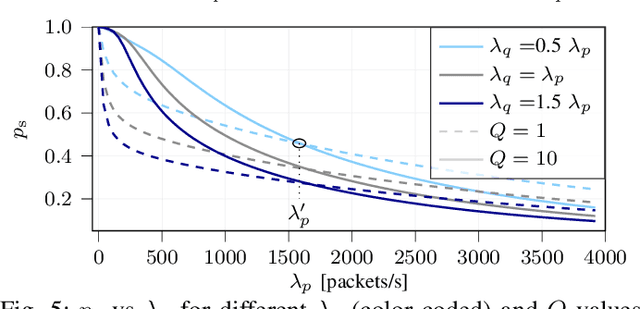
Abstract:We consider a setup with Internet of Things (IoT), where a base station (BS) collects data from nodes that use two different communication modes. The first is pull-based, where the BS retrieves the data from specific nodes through queries. In addition, the nodes that apply pull-based communication contain a wake-up receiver: upon a query, the BS sends wake-up signal (WuS) to activate the corresponding devices equipped with wake-up receiver (WuDs). The second one is push-based communication, in which the nodes decide when to send to the BS. Consider a time-slotted model, where the time slots in each frame are shared for both pull-based and push-based communications. Therein, this coexistence scenario gives rise to a new type of problem with fundamental trade-offs in sharing communication resources: the objective to serve a maximum number of queries, within a specified deadline, limits the transmission opportunities for push sensors, and vice versa. This work develops a mathematical model that characterizes these trade-offs, validates them through simulations, and optimizes the frame design to meet the objectives of both the pull- and push-based communications.
Control Aspects for Using RIS in Latency-Constrained Mobile Edge Computing
Dec 19, 2023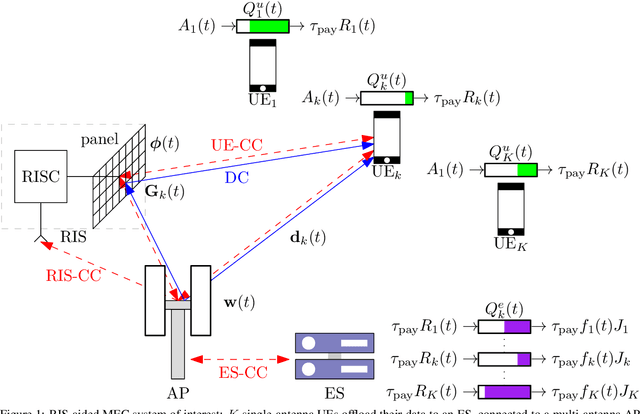
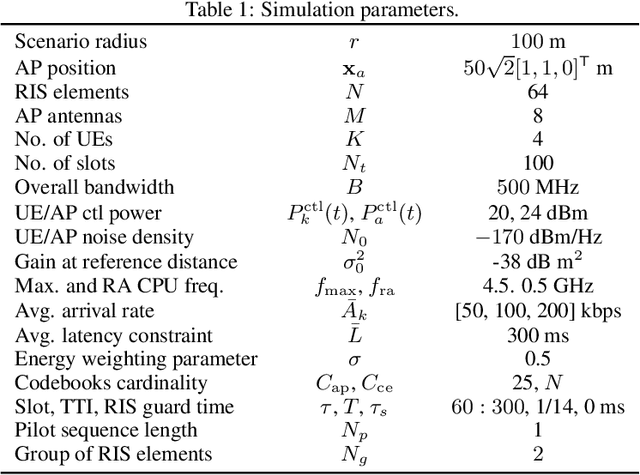
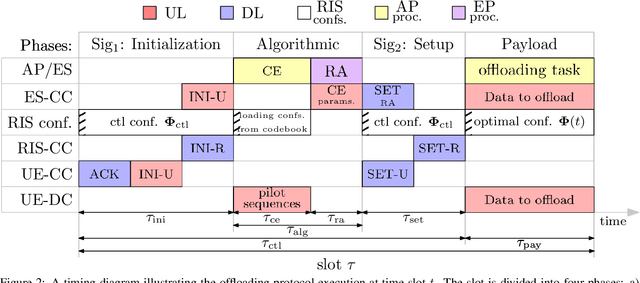
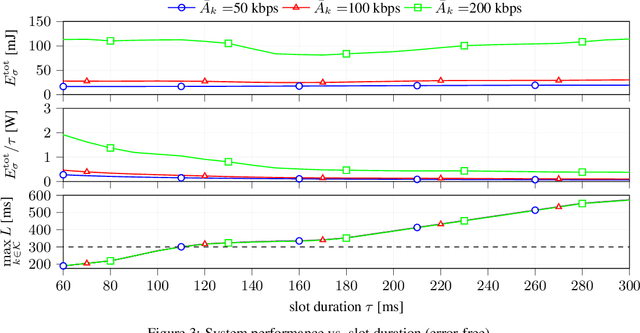
Abstract:This paper investigates the role and the impact of control operations for dynamic mobile edge computing (MEC) empowered by Reconfigurable Intelligent Surfaces (RISs), in which multiple devices offload their computation tasks to an access point (AP) equipped with an edge server (ES), with the help of the RIS. While usually ignored, the control aspects related to channel estimation (CE), resource allocation (RA), and control signaling play a fundamental role in the user-perceived delay and energy consumption. In general, the higher the resources involved in the control operations, the higher their reliability; however, this introduces an overhead, which reduces the number of resources available for computation offloading, possibly increasing the overall latency experienced. Conversely, a lower control overhead translates to more resources available for computation offloading but impacts the CE accuracy and RA flexibility. This paper establishes a basic framework for integrating the impact of control operations in the performance evaluation of the RIS-aided MEC paradigm, clarifying their trade-offs through theoretical analysis and numerical simulations.
Energy-efficient Wireless Image Retrieval for IoT Devices by Transmitting a TinyML Model
Nov 08, 2023


Abstract:This work considers a scenario in which an edge server collects data from Internet of Things (IoT) devices equipped with wake-up receivers. Although this procedure enables on-demand data collection, there is still energy waste if the content of the transmitted data following the wake-up is irrelevant. To mitigate this, we advocate the use of Tiny Machine Learning (ML) to enable a semantic response from the IoT devices, so they can send only semantically relevant data. Nevertheless, receiving the ML model and the ML processing at the IoT devices consumes additional energy. We consider the specific instance of image retrieval and investigate the gain brought by the proposed scheme in terms of energy efficiency, considering both the energy cost of introducing the ML model as well as that of wireless communication. The numerical evaluation shows that, compared to a baseline scheme, the proposed scheme can realize both high retrieval accuracy and high energy efficiency, which reaches up to 70% energy reduction when the number of stored images is equal to or larger than 8.
 Add to Chrome
Add to Chrome Add to Firefox
Add to Firefox Add to Edge
Add to Edge